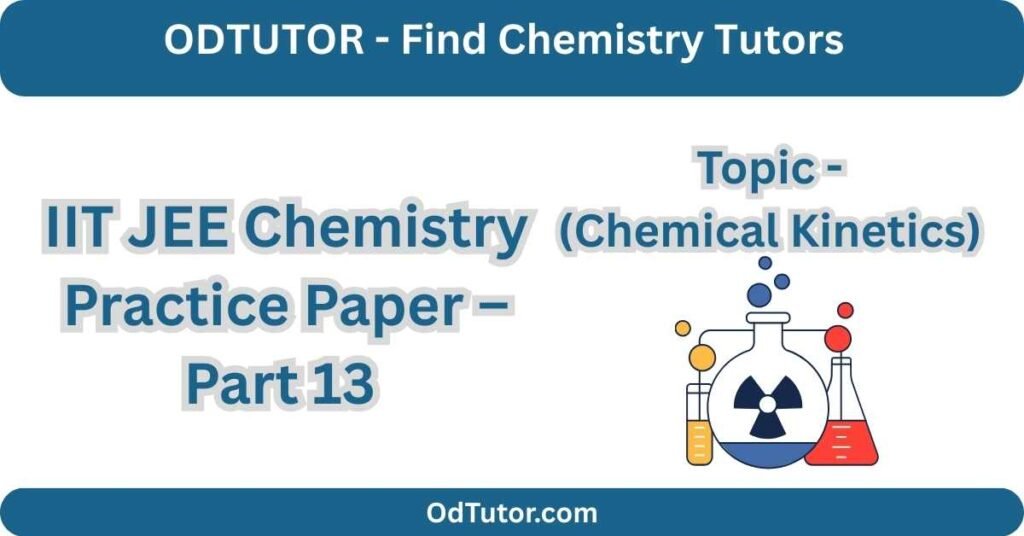Instructions: Each question carries 4 marks. Select the best answer and submit to view your score, correct answers, and explanations.
Introduction to IIT JEE Chemistry – Chemical Kinetics
The Chemical Kinetics chapter holds a very significant place in Physical Chemistry and is frequently tested in the IIT JEE Main and Advanced examinations. While Thermodynamics tells us whether a reaction is feasible or not, Chemical Kinetics focuses on how fast the reaction occurs and what factors influence the rate. For aspirants, mastering this topic ensures a strong foundation for solving numerical problems and conceptual questions that often appear in competitive exams.
What is Chemical Kinetics?
Chemical Kinetics is the branch of chemistry that deals with the speed (rate) of chemical reactions, the mechanisms by which they proceed, and the factors influencing the rate. For example, while burning of paper in air is very slow at room temperature, it becomes very fast when ignited with a flame. This difference is explained by kinetics, not thermodynamics.
Importance in IIT JEE
In JEE Main and Advanced, questions from this chapter range from basic definitions and order of reaction concepts to numerical problems on half-life, integrated rate laws, Arrhenius equation, and activation energy. Understanding this chapter not only helps in direct scoring but also supports other concepts like equilibrium, electrochemistry, and surface chemistry. On average, 2–3 questions are asked every year in JEE Main from this topic.
Key Concepts Students Must Master
- Rate of Reaction: Expressed as the change in concentration of reactants/products per unit time.
- Order and Molecularity: Order is determined experimentally, while molecularity is based on the reaction mechanism.
- Integrated Rate Laws: Different formulas for zero-order, first-order, and second-order reactions must be learned thoroughly.
- Zero-order: [A] = [A]₀ – kt
- First-order: ln[A] = ln[A]₀ – kt
- Second-order: 1/[A] = 1/[A]₀ + kt
- Half-Life (t₁/₂):
- For first-order: t₁/₂ = 0.693/k (independent of concentration).
- For zero-order: t₁/₂ depends on initial concentration.
- Arrhenius Equation: k = A·e^(-Ea/RT) explains how temperature affects rate constant. The slope of ln k vs 1/T gives –Ea/R.
- Catalysis: Role of catalysts in lowering activation energy and changing the mechanism of reaction.
Application-Based Questions in JEE
Students must expect questions like:
- Determining rate constant and half-life from given concentration data.
- Using Arrhenius plots to calculate activation energy.
- Identifying reaction order by observing rate change on varying concentration.
- Conceptual questions on role of catalyst, reaction mechanisms, and temperature effect.
Tips for JEE Preparation
- Practice previous year IIT JEE problems on integrated rate laws and Arrhenius equation.
- Revise the formulas of half-life and units of rate constants thoroughly.
- Pay attention to the difference between order and molecularity (a favorite conceptual trap in JEE).
- Work on numerical accuracy since most questions involve calculations.
Why This Practice Paper Will Help
This Part 13 Practice Paper on Chemical Kinetics is designed to test students on both theoretical understanding and problem-solving skills. The multiple-choice format reflects the exact pattern of JEE, and each question includes explanations to aid in quick revision. By attempting this quiz, aspirants can identify weak areas, strengthen concepts, and improve speed and accuracy—two essential qualities for cracking JEE.

